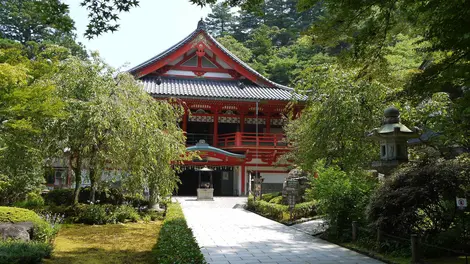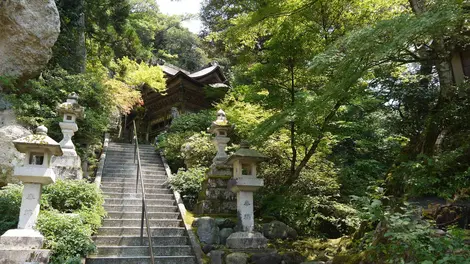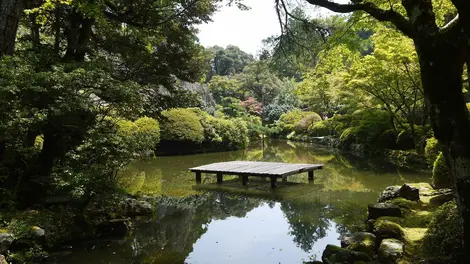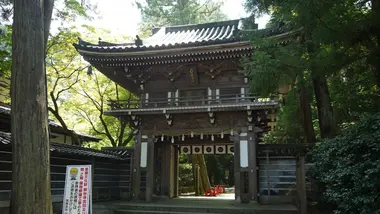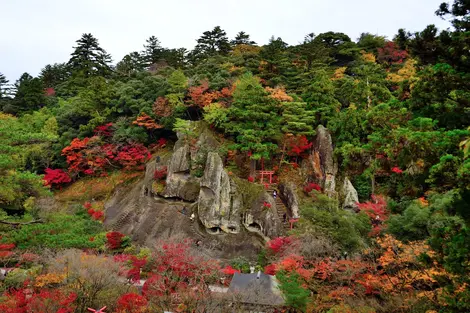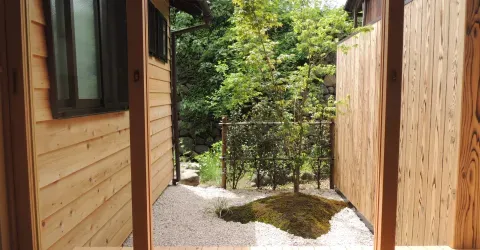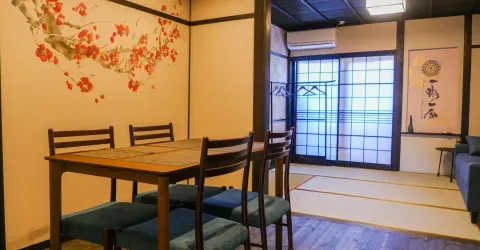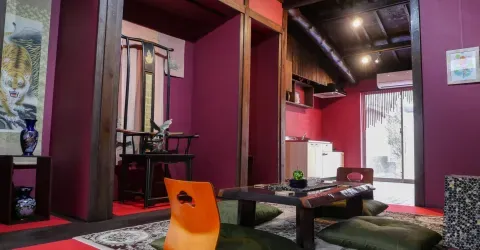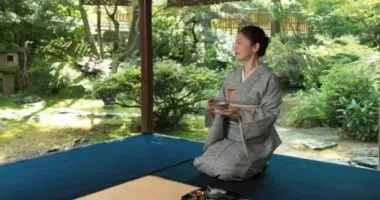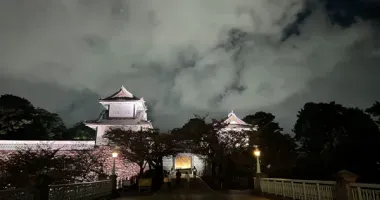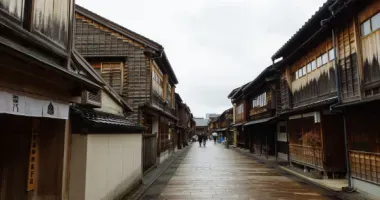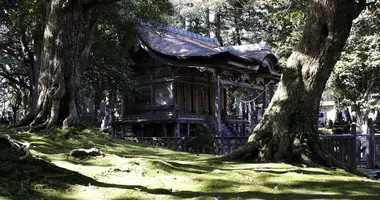Natadera Temple 那谷寺
- Published on : 18/06/2019
- by : O.F.
- Youtube
The temple with prayer halls carved into the rock.
Near the city of Komatsu and the Sea of Japan, Natadera Temple worships the Buddhist goddess Kannon and Mount Hakusan. Nestled in the heart of Ishikawa Prefecture, one of Japan's most unspoilt regions, discover Natadera: a haven of peace built on a sacred site to which locals have given soul-purifying powers for thousands of years. It is one of the most protected treasures of modern Japan.
The history of the Natadera Temple
The site now hosting the Natadera Monastery has been sacred to the local population since the Jomon period (14,000 to 300 BC). The natural cave there was then seen as a sacred womb , compared to the womb of a woman. Believing in reincarnation, they thought they could purify their souls by crossing this sacred cave.
But it was in 717 that the temple was founded by the great Buddhist monk Taichô , the first to climb Mount Hakusan. During his visit, he realizes that the goddess Kannon, Buddhist goddess of mercy and compassion, resides there and he then decides to build Natadera in her honor.
Today it is a set of several buildings that you will find on the sacred site, Buddhist temples and Shinto shrines combined.
After destructive fires, it was during the Edo period (1603-1868) that the 3rd lord of the Kaga domain, Maeda Toshitsune created new buildings under the order of the former emperor Go-Mizuno , the 108th emperor of Japan who reigned over the archipelago from 1611 to 1629. He notably had a main prayer hall built in a cave, the Karamon gate, the three-storey pagoda and the Gomadou hall, where rites with the sacred fire are held.
In 1941, all buildings related to Toshitsune were listed as national treasures. They have now become important cultural properties of Japan .
What is there to see at Natadera Temple?
One of the peculiarities of this place is the fact that it is built near a cliff and meditation caves have been carved by hand, and by nature, into the rock face. This is where sacred rites of purification have been performed for thousands of years.
In the most important buildings of Natadera, there is first of all the Honden , the main pavilion of the temple , which, built against the cliff made it an integral part of the building.
There is also the golden pavilion, Kondô kaô-den , which hosts all Buddhist ceremonies in Natadera. Built of Japanese cypress wood in the architectural style of the Kamakura period (1185 - 1333), it houses a statue of the goddess Kannon.
The various buildings on the site blend into nature, which then becomes part of the magnificent ensemble that is Natadera.
Mount Hakusan Worship and the Importance of Nature
The temple is built in a lush valley and has a large grounds with many centuries-old cedars and camellias. In addition to this wild nature, the site also includes a Japanese garden with a body of water, recognized as being the oldest garden in Ishikawa prefecture.
The Buddhist concept of communion with Nature ( jinenchi ) , a pillar of the Taichô teaching, is represented here along with the notion of Nature-veneration that characterizes Mount Hakusan worship .
In autumn, during the koyo , the Japanese maples in the park surrounding the temple take on beautiful yellow and red colors and set the landscape ablaze. And in spring, cherry blossoms adorn Natadera Park.
How to get to Natadera Temple?
Take the train from Kanazawa city to Kaga-onsen station, then take the "CAN BUS" sightseeing bus which will take you to Natadera Temple via a small mountain road. It takes 25 minutes from Kanazawa to Kaga-onsen and 35 minutes from Kaga-Onsen to Natadera Temple.
Remember that JR Passes are valid on most express trains between Kanazawa and Kaga-onsen . Then a one-day pass for "CAN BUS" can be purchased at the information center of Kaga-onsen station for 1,000 yen (about 8€).
Address, timetable & access
Address
Timetable
The Natadera temple is served by the Can Buses (Yamawari road). The bus ride from Kaga Onsen Station takes about 50 minutes and there are 1 or 2 departures per hour.Price
600 yen (about 5€)Access
8:30 a.m. to 4:45 p.m. (March to November) 8:45 a.m. to 4:30 p.m. (December to February)Website
http://www.natadera.com/FR/



